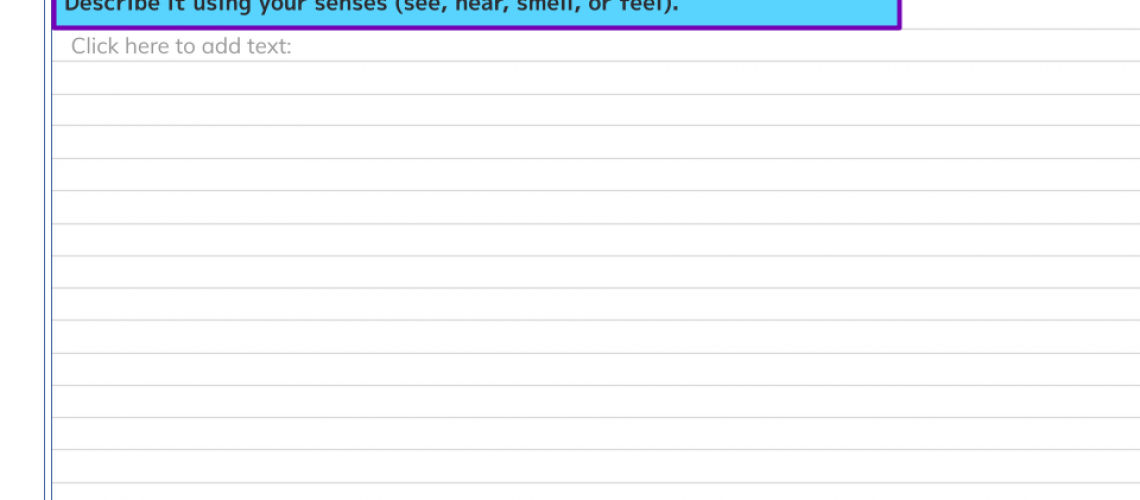April is National Poetry Month and the perfect time to embed this art form into your curriculum. Set students up to recognize that poetry is everywhere in the world around them. From Amanda Gorman’s Inauguration Day poem to Shel Silverstein’s infamous Where the Sidewalk Ends, poetry sets the stage for critical thinking and making connections. Poetry can be easily embedded in reading, writing, and language lessons, and seamlessly plugged into themes, celebrations, and projects. Engage your students with poetry using the following teaching and learning strategies.
Teaching Strategies
Bridge poetry and identity. One of the most effective ways to keep students engaged is to keep content relevant and relatable. A lot of poets write poems regarding their life experiences, family, relationships, and identity. If you are launching a poetry unit, have students begin to express themselves using an “I Am” poem model to bridge poetry and identity. “I Am” poems are just one type of personal poem that provides students a platform to talk about themselves and their identity. Students can touch on their personality, values, race, religion and more. For complex examples of “I Am” poems, check out Maya Angelou’s Still I Rise and Charles Bennefield’s I Am Diversity, Please Include Me poem. Students can use these examples as mentor texts to see how poets showcase different facets of their identity and the challenges they face in society.
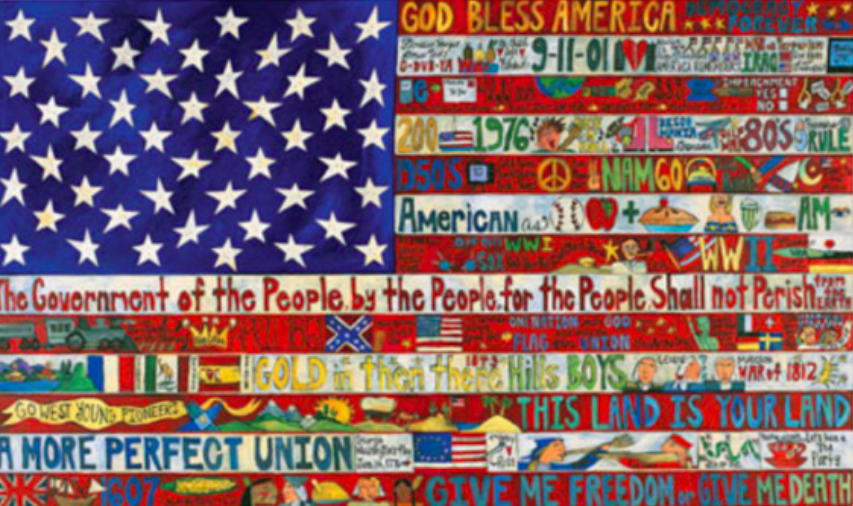
For a detailed example on how to engage students with this type of poetry check out our “Art, Poetry, and the World Around Us,” instructional slides that set the stage for students to reflect on the context, change, and their perspective on America. Here is an example of the “I Am American” Flag Art Poem.
Use poetry to teach different perspectives. Use poetry to get students thinking about the world in new ways and through different lenses. “I Am” poems can also be used to have students view multiple perspectives. Check out our NexGen News lesson plan, “Mosque Tolls Bell for Religious Freedom.” This lesson plan is designed for students in grades 3-8, and sets the stage for students to research different religions. Students will be prompted to create a collection of “I Am” poems from different religious points of view. For more teaching strategies and resources, check out Use Poetry to Teach Identity.
Analyze poetry using a Poetry Mat. In all grade levels, students can find poetry overwhelming at times. Students can get lost on their mission to uncover the poet’s meaning if not given the proper tools. This year, supply your students with a Poetry Mat, which has student friendly prompts and questions to help all students analyze a poem. Check out our free editable Poetry Mat resource here.
Before Reading Strategies:
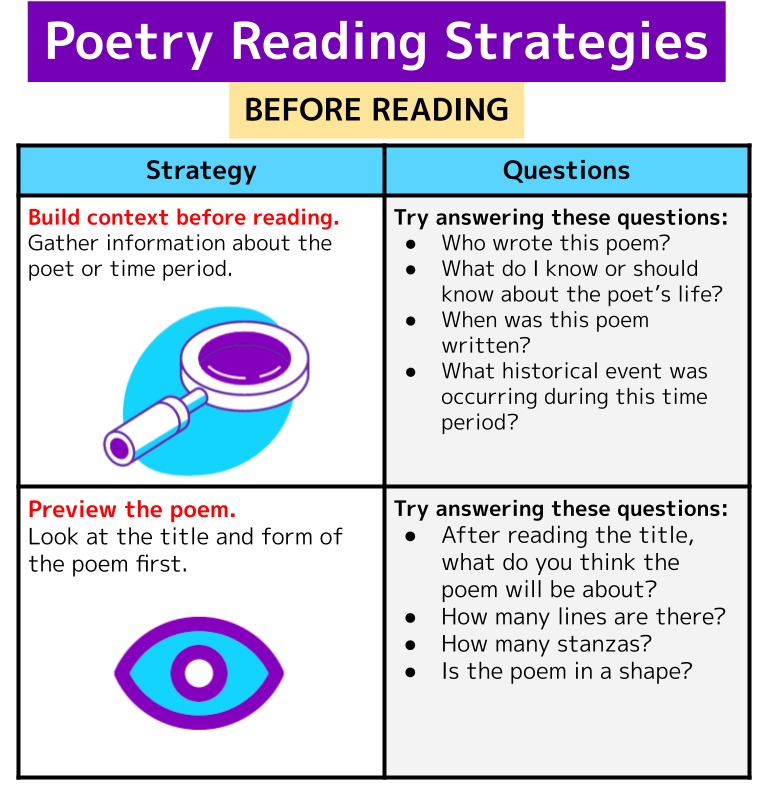
During Reading Strategies
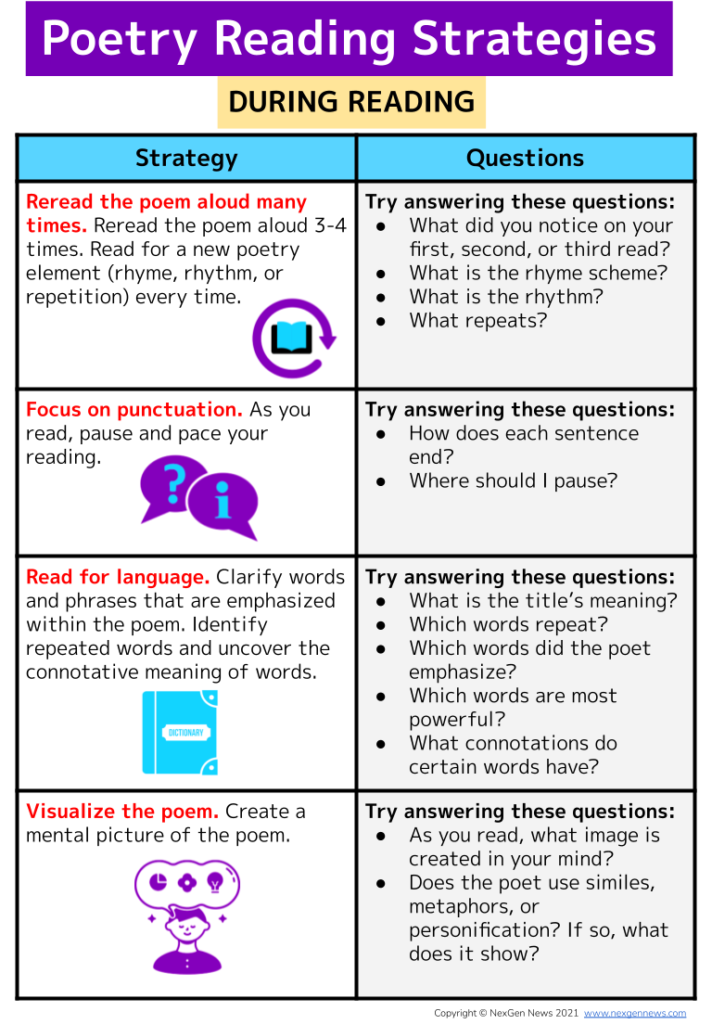
After Reading Strategies:
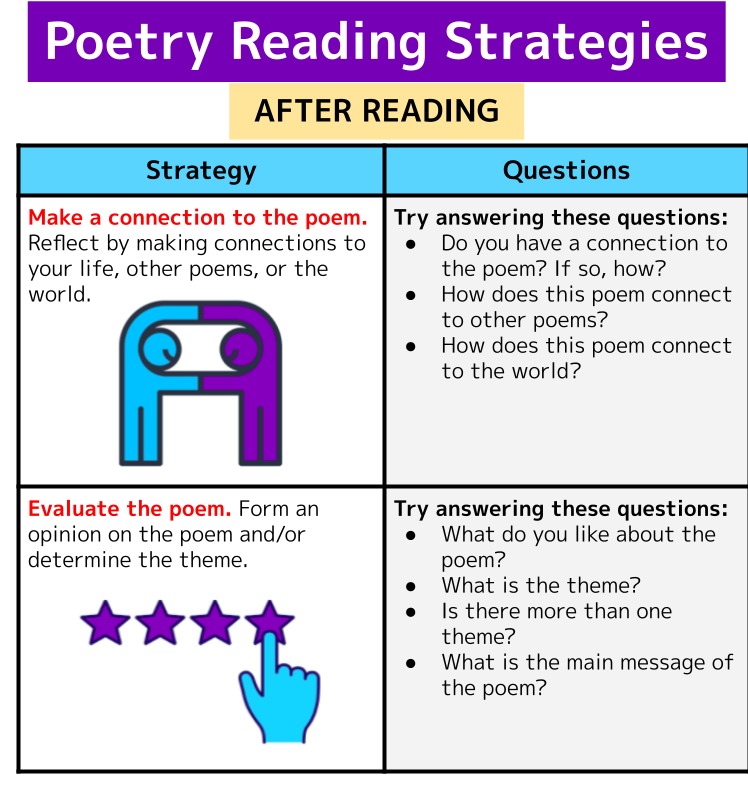
Writing Strategies
Use poetry as an outlet for students to share their experiences and emotions. Now that you have hooked students on reading and analyzing poetry, morph your students into poets. Writing can be used as a healing tool for your students. Writing personal narratives are usually required for our students, but sprinkle in poetry writing to unleash students’ fears, dreams, or fantasies.
Poetry can be a powerful tool for student self-expression because it doesn’t need to follow a strict timeline and be guided by students’ minds. Instead poetry can be written from students’ hearts and can be guided by their imagination.
Engage students by asking them to express themselves by writing their own poem. Need a refresher on all the different poem types? Check out A Beginner’s Guide to Different Types of Poems. Use a Writing to Heal prompt or journal to help students brainstorm, record, and reflect on all their life experiences and emotions. Students can use these prompts or journals to reflect on their emotions and guide their poetry writing. Check out our editable Writing to Heal student journal template here.
Journal Example:
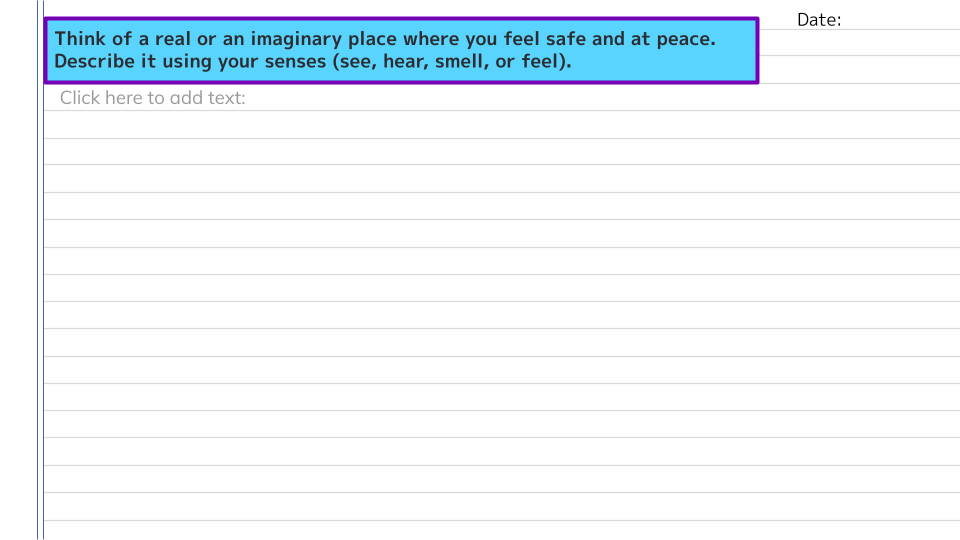
Need more resources? Check out these other blogs.
Primary Grades
- https://www.readingrockets.org/calendar/poetry#poets
- https://mrsrenz.com/10-poetry-tips/
- https://proudtobeprimary.com/reasons-teach-poetry-classroom/#:~:text=Poetry%20is%20a%20form%20of,way%20of%20thinking%20about%20something
Middle School
Written by NexGen News staff member, Brittany Acevedo.

